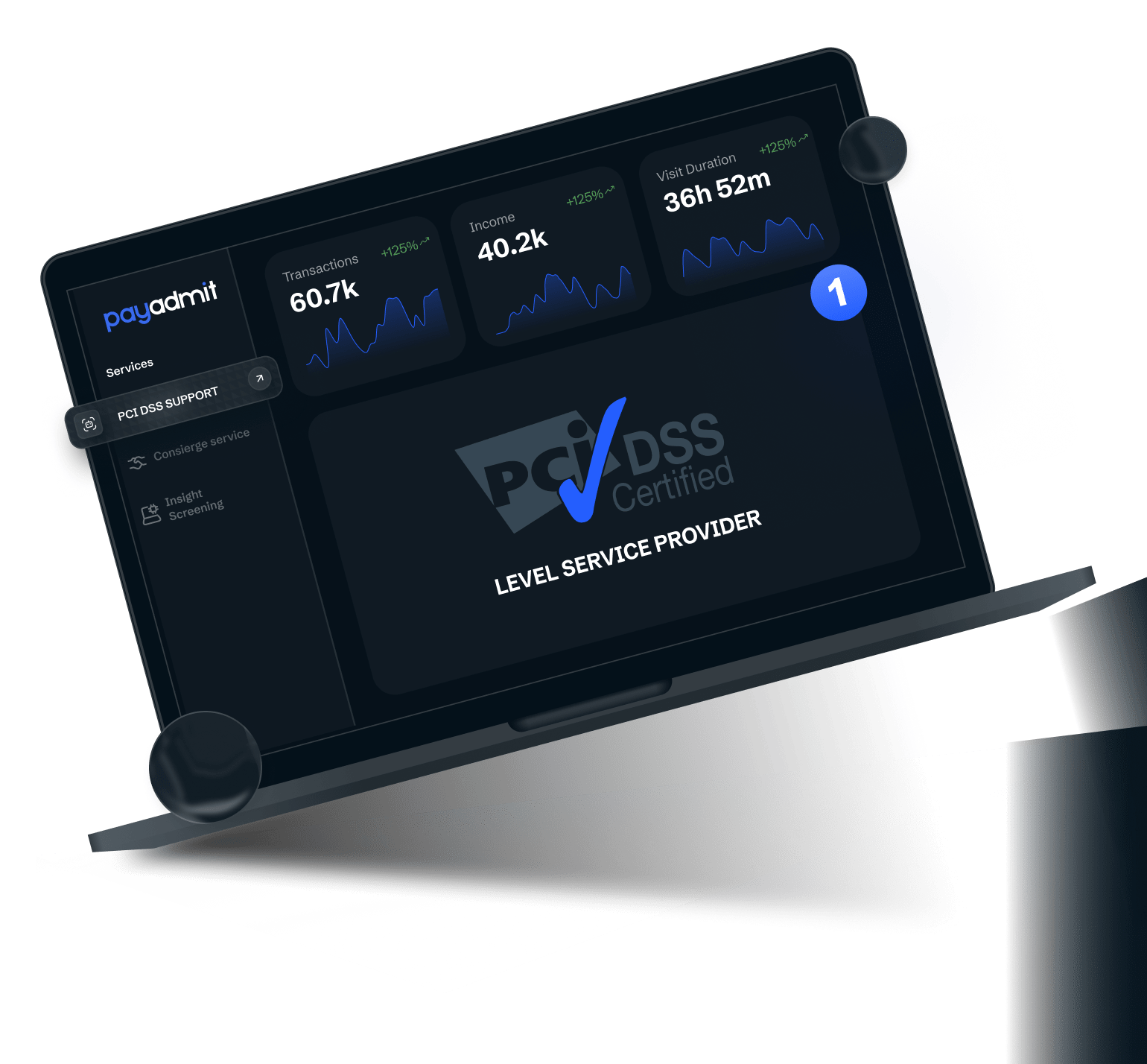The cost depends on the size of your business, the number of annual transactions, the payment providers you partner with, and much more.
WHAT IS PCI COMPLIANCE AND WHY DOES IT MATTER?
PCI DSS (Payment Card Industry Data Security Standard) is a set of security standards that protect cardholder data from unauthorized access and damage. Founded by the Security Standards Council and enforced by the major payment card brands, it supports customized implementation of security controls.
PCI DSS compliance is mandatory for merchants and payment providers. They can take the necessary measures based on their transaction volumes and potential risks.
Ensure your business prevents, detects, and responds to security threats efficiently.
WHY DO YOU NEED PCI COMPLIANCE HELP?
Every business supporting card payments must adhere to PCI DSS standards. Here are the main reasons why:
- Develop and maintain a strong network.
- Protect cardholder data across different networks.
- Eliminate existing vulnerabilities through an antivirus software update.
- Control access to cardholder data based on business needs.
Ensure the privacy and integrity of cardholder data through credit card PCI compliance.
STEP-BY-STEP GUIDE TO BECOMING PCI DSS COMPLIANT
The way of becoming compliant with PCI DSS standards involves a few simple steps:
- Assess your current security situation to identify compliance gaps.
- Create and launch an initiative to address identified gaps and align.
- Complete internal or external testing to ensure all requirements are met.
- Submit your reports to obtain the official certification.
Ensure robust security and regulatory adherence through PCI compliance requirements.
WHAT ARE THE KEY REQUIREMENTS OF PCI DSS COMPLIANCE?
PCI information highlights essential requirements to protect cardholder data and maintain secure systems. These include:
- Implement and maintain firewalls to protect card data.
- Avoid system passwords or other security measures not specified by the vendor.
- Protect all systems from malware and upgrade antivirus software on time.
- Restrict external access to cardholder data without real urgency.
- Control access to the network and cardholder data.
- Test security systems and other related processes.
- Implement policies that address safety issues for all parties involved.
These requirements represent a complete framework to reduce vulnerabilities, ensure secure access, and enable continuous maintenance.
Fulfill the daily demands of protecting your business from security risks and threats.
WHAT IS THE ROLE OF PAYADMIT IN MEETING PCI DSS REQUIREMENTS?
PayAdmit has an expert team to help our corporate clients achieve PCI DSS compliance. We complete risk assessments, compliance audits, security training, and implementation support.
Compliance can be successfully achieved and integrated into operational workflows. We can help you navigate PCI regulations more effectively!
Let us guide your company toward sustainable PCI DSS compliance in a short time
HOW PAYADMIT PROVIDES PCI DSS COMPLIANCE SUPPORT AND HELP?
Our corporate clients who use PayAdmit as a payment orchestrator can get our assistance in meeting PCI DSS requirements. Here is the way we can help your business:
- Building your compliance through a customized dashboard experience.
- Maintaining your business compliance throughout the market growth.
- Informing you about any new security requirements to be met.
- Collecting Attestations of Compliance (AOCs) from all payment providers you work with.
Secure a business environment that aligns with PCI compliance standards.
FREQUENTLY ASKED QUESTIONS
What is the cost of PCI compliance?

Who demands PCI DSS compliance?

PCI DSS was developed by the Security Standards Council. It is enforced by the major card brands like Master Card, Visa, American Express, JCB International, and Discover.
Which PCI DSS compliance level is right for your business?

The compliance validation level depends on the number of transactions you handle annually and the payment brands you work with. For example, businesses with low transaction volumes (around 50,000 card transactions annually) will stick with a lower validation level.
What belongs to cardholder data?

Cardholder data is any personal data associated with a cardholder. This may include an account number, expiration date, full name, physical address, social security number, etc.
Who must comply with PCI DSS?

Small and large merchants, service providers, financial institutions, as well as issuing and acquiring banks, must comply with these security standards.
How to secure credit card data through PCI DSS compliance?

This compliance ensures that all commercial companies that manage credit card information maintain a secure environment and protect cardholder data. Adhering to these security requirements helps achieve the standard compliance.
What are the penalties for non-compliance with the PCI DSS requirements?

Each payment brand can fine the acquiring banks for violating these requirements. Meanwhile, acquiring banks can withdraw the ability to accept card payments from non-compliant merchants. Compliance obligations for merchants also increase significantly in the case of a data breach or any other threat.
How long does it take to achieve PCI DSS compliance?

It depends on the size and complexity of the organization, the level of existing security measures, and the specific requirements to be met. For smaller businesses, the process may take up to several months. Larger businesses with more complex systems may require around one year to comply with these standards fully.
Why should you isolate cardholder data and consolidate it?

You should isolate and consolidate cardholder data to minimize security risks. This can be done by reducing the scope of compliance and limiting exposure in case of a breach. It simplifies data management, enhances protection, and lowers compliance costs by focusing security efforts on more controlled settings.
What are common control failures?

Common control failures include storing sensitive authentication data after authorization, insecure web application coding, lack of logging and monitoring, and poor scoping decisions. These weaknesses allow hackers to exploit vulnerabilities, leading to data breaches and identity theft. Proper implementation of PCI DSS standards is crucial for data protection.
